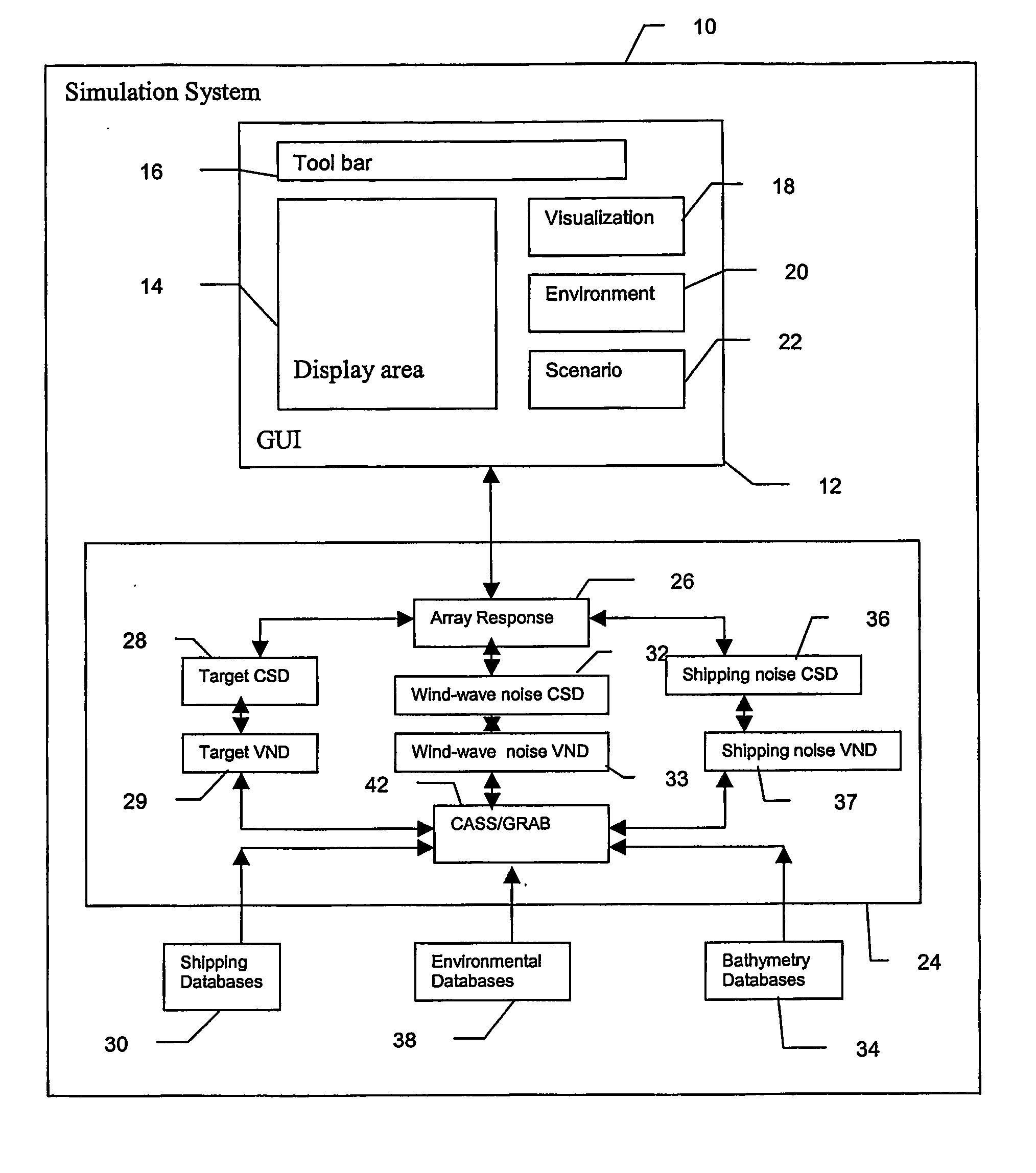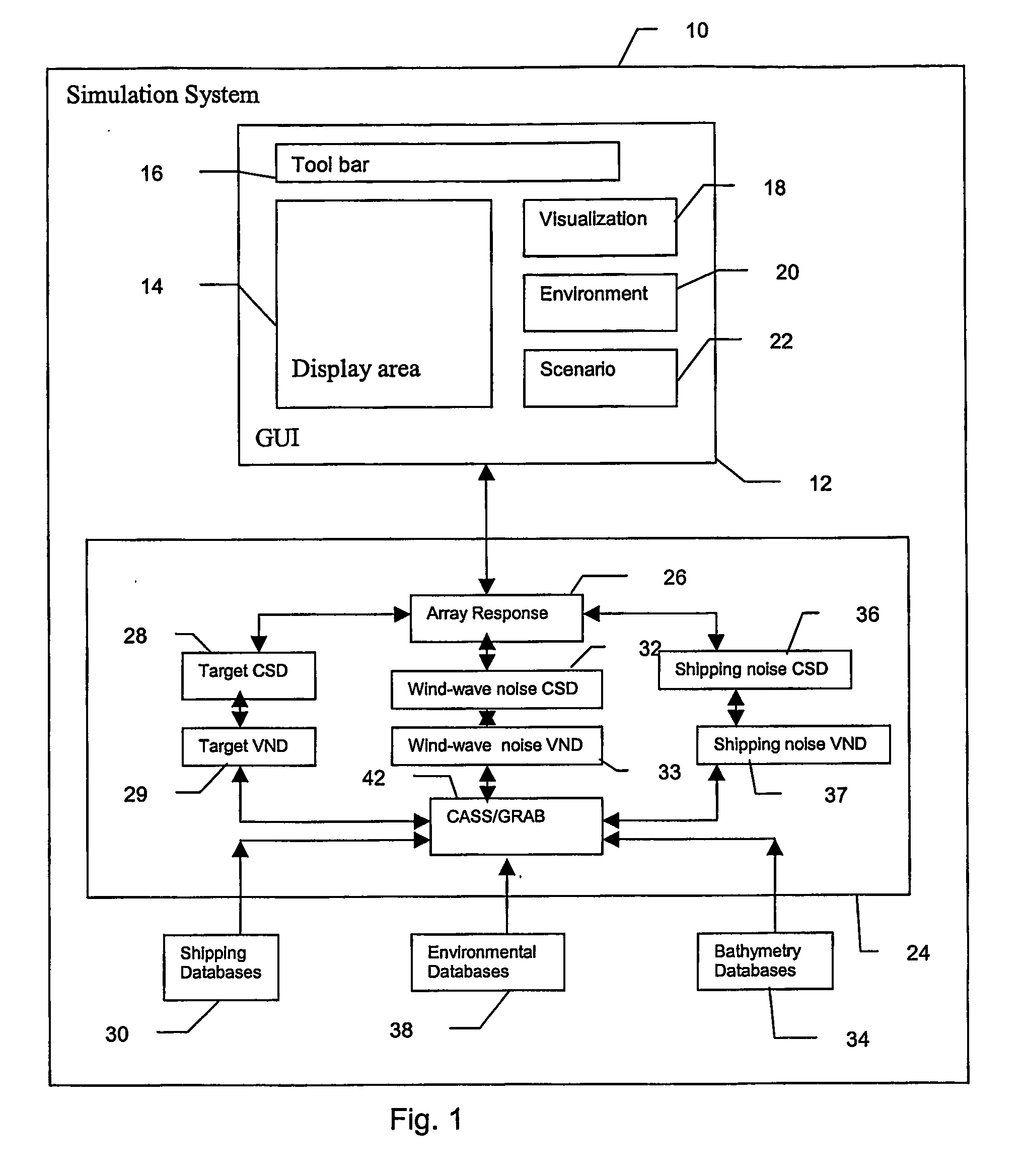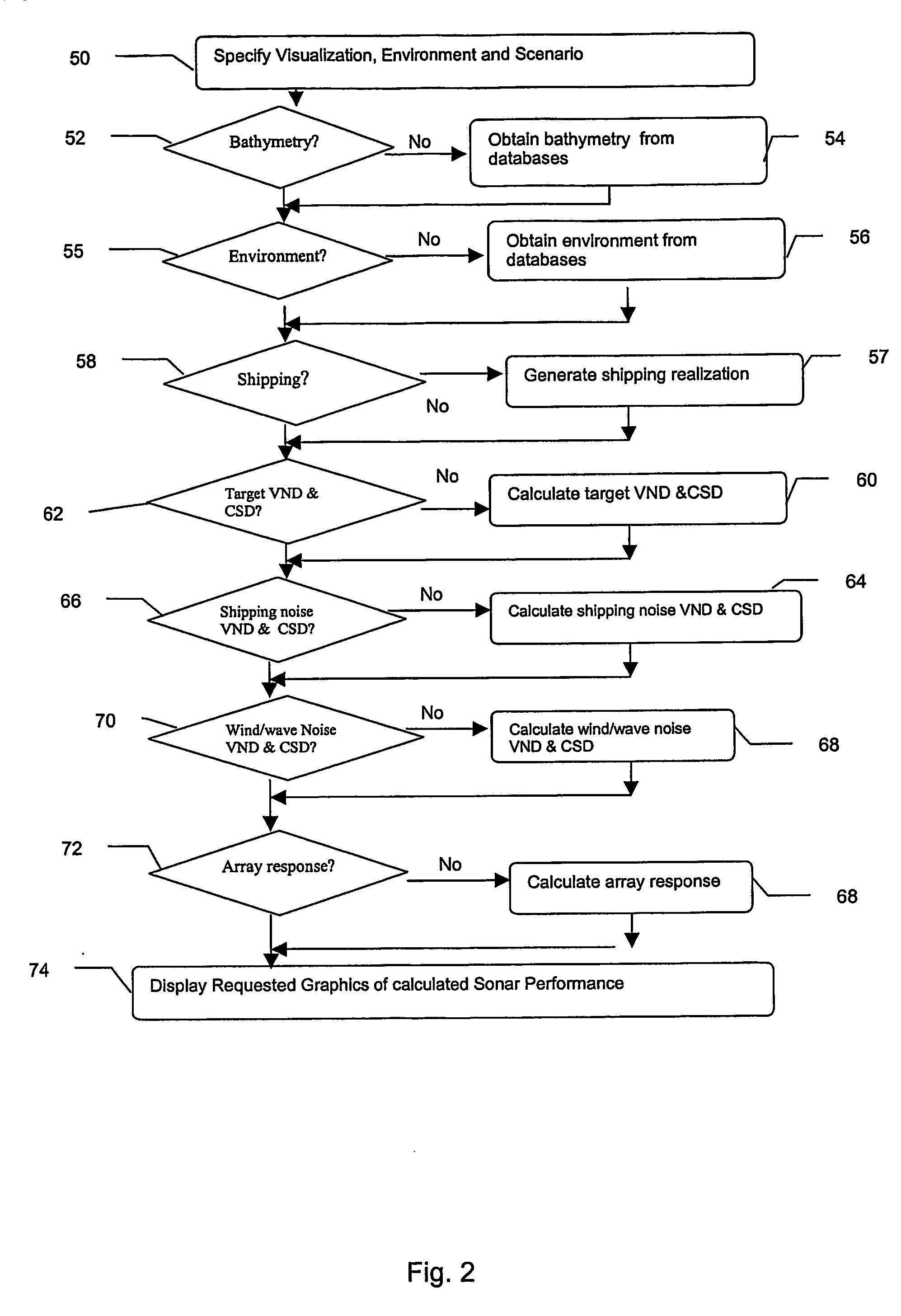Method and apparatus for high-frequency passive sonar performance prediction
a sonar performance and high-frequency technology, applied in direction finders using ultrasonic/sonic/infrasonic waves, transmission monitoring, instruments, etc., can solve the problems of large changes in the modeling methods of sonar systems, source of ambient noise, and general inverse proportional size and cost of sonar arrays
- Summary
- Abstract
- Description
- Claims
- Application Information
AI Technical Summary
Benefits of technology
Problems solved by technology
Method used
Image
Examples
Embodiment Construction
[0024] The present invention is related to a system and method for simulating the performance of sonar arrays, in particular simulating the performance of high-frequency (1 kHz-20 kHz), passive sonar systems.
[0025] In a preferred embodiment of the invention, it is implemented as a software package running on a computer. A user interacts with this software package via a Graphic User Interface (GUI) which allows them to select variables relevant to the sonar system's performance including, but not limited to, the location of the sonar, the type of sonar, the type of object being sought and the time of year. The system then obtains the necessary data including, but not limited to, the necessary bathymetry, oceanographic, meteorological and sonar system data. This data is obtained either from default databases associated with the program or compatible, user defined databases.
[0026] The software system of this invention can then processes this data using a sound propagation model such ...
PUM
 Login to View More
Login to View More Abstract
Description
Claims
Application Information
 Login to View More
Login to View More - R&D
- Intellectual Property
- Life Sciences
- Materials
- Tech Scout
- Unparalleled Data Quality
- Higher Quality Content
- 60% Fewer Hallucinations
Browse by: Latest US Patents, China's latest patents, Technical Efficacy Thesaurus, Application Domain, Technology Topic, Popular Technical Reports.
© 2025 PatSnap. All rights reserved.Legal|Privacy policy|Modern Slavery Act Transparency Statement|Sitemap|About US| Contact US: help@patsnap.com



